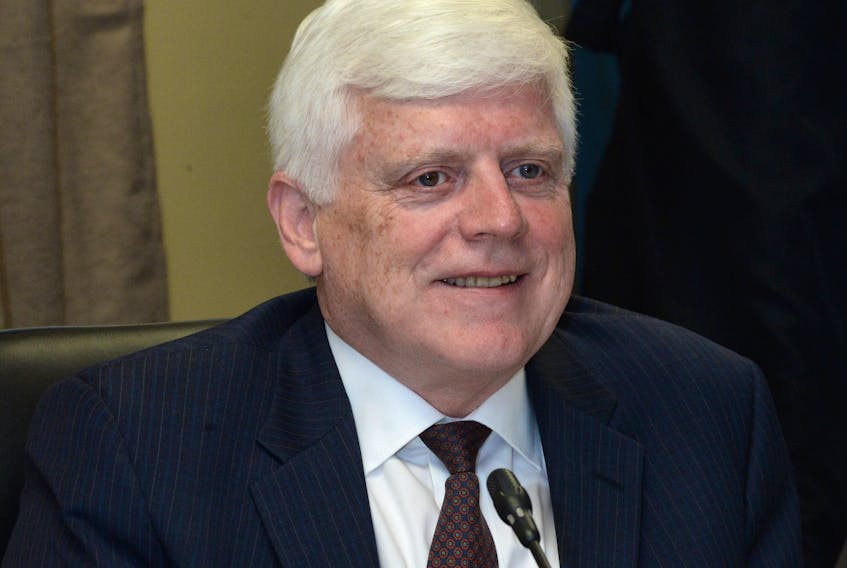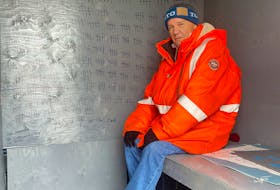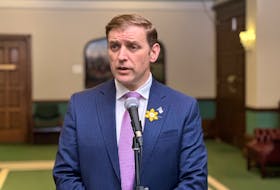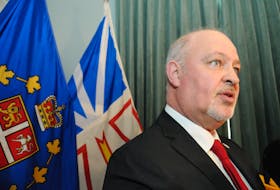ST. JOHN'S, N.L. — Ed Martin is standing by his decided approach to the Muskrat Falls project cost and schedule estimates, and revisions made, at least to 2016.
The former president and CEO of Nalcor Energy refused to give an inch Wednesday at the ongoing public inquiry into the project. That’s despite inquiry co-counsel Barry Learmonth telling him that he stood alone in thinking internal estimates from Nalcor’s project management team didn’t need to go beyond the executive, to the board of directors or to the provincial government.
Particular attention was paid to the team’s reports to Martin and vice-president Gilbert Bennett in the summer and early fall of 2013. The reports included a capital cost estimate of $7 billion in July 2013, when the publicly stated project cost was just $6.2-billion.
Martin said internal estimates moved up and down all the time. He emphasized he hadn’t checked and challenged the team’s numbers as presented. And he suggested putting multiple numbers from the team to the board of directors and the government in short order would only have contributed to confusion.
“You’re alone in your belief,” Learmonth said. “Completely alone and isolated in your position the (July) 2013 report final forecast cost should not have been provided to government.”
Learmonth went on to list witnesses who have testified to their belief the information was unknown to them and should have been shared beyond Martin’s office. It included former clerk of the executive council Robert Thompson; former deputy minister of Natural Resources Charles Bown; former Natural Resources minister Derrick Dalley; another former clerk, Julia Mullaley; Finance minister of the day Tom Marshall; and Paul Davis, also a minister at the time.

Former premier Kathy Dunderdale testified she found the $7-billion estimate before financial close “shocking.”
Former Nalcor board chair Ken Marshall expressed some uncertainty, with reasoning much like Martin’s, but ultimately said he believed the estimate should have been brought to the board of directors.
Learmonth said bids on many project contracts were coming in higher than expected and the provincial government could have reassessed or cancelled the project, before financial agreements were signed, but weren’t given the chance to consider it.
Martin said he had kept electricity ratepayers in mind throughout in his own decision-making, weighing overruns on the capital budget against savings in financing and other factors.
“All of those things had to be brought together to be able to make a reasonable decision and that’s what we did,” he said, describing it as a full package update.
As for the increase to a $6.5-billion capital cost at financial close, Martin said he recalls telling former premier Dunderdale of the $300-million change, but not who else might have been at the meeting.
He said he does not recall reporting it to finance minister Tom Marshall.
As the Muskrat Falls project progressed, there were new AFEs — “authorizations for expenditure,” approved budgets. Martin was asked again about the lag between internal project team estimates and the publicly stated project cost updates.
“(The AFEs) were based upon the best information we had at the time, the best analysis we had at the time, and what we had in our hands,” he said, adding that cost pressures were shared with the government.
Was it all just a case of an overly ambitious budget and schedule to start with? Martin said he made decisions on risk, but the budget and schedule were built in collaboration with the project team and he did not “impose” anything. At the same time, he said he was the one who decided when to go with the numbers, and was ultimately accountable.
As for a “management reserve” in case the project went off the rails, Martin confirmed the project was started with no hidden cash. But he argued a financial “buffer” was in place, in case the project ran into trouble.
He didn’t call it a management reserve, but viewed it that way.
“Those discussions were had clearly (with the government) and it was covered off in things such as the ability to use revenue from excess (energy) sales, the ability to use the revenue from water rentals and the ability to use the return on equity that was included in the project,” he said.
All are currently a part of discussions around rate mitigation efforts, to help provincial ratepayers manage the costs of the hydro project.
Martin is scheduled to continue testimony Thursday. His time on the stand may or may not run into Friday as needed, with no other witnesses scheduled for this week.
Twitter: @TeleFitz
RELATED









